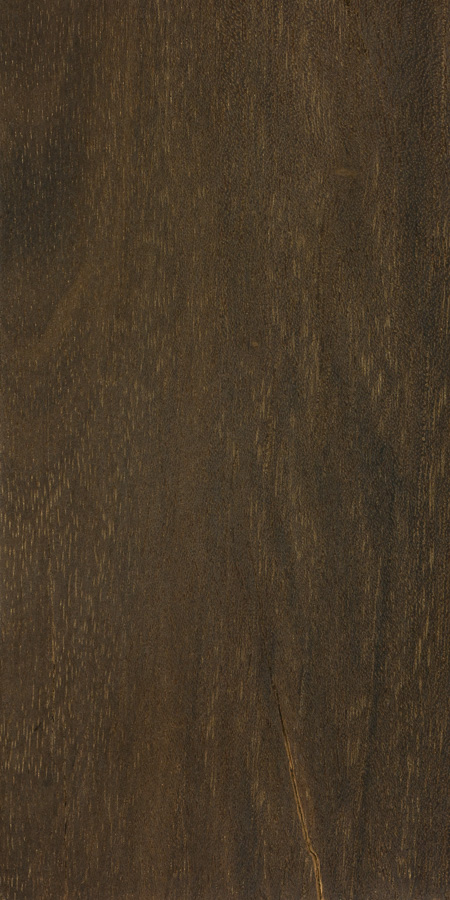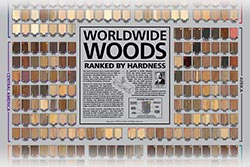Common Name(s): Preciosa, canelon, casca preciosa
Scientific Name: Aniba canelilla
Distribution: Central America down to northern South America
Tree Size: 65-100 ft (20-30 m) tall,
1-2 ft (.3-.6 m) trunk diameter
Average Dried Weight: 68.7 lbs/ft3 (1,100 kg/m3)
Specific Gravity (Basic, 12% MC): .97, 1.10
Janka Hardness: 3,340 lbf (14,860 N)
Modulus of Rupture: 26,670 lbf/in2 (183.9 MPa)
Elastic Modulus: 2,546,000 lbf/in2 (17.56 GPa)
Crushing Strength: 14,180 lbf/in2 (97.8 MPa)
Shrinkage: Radial: 6.4%, Tangential: 8.2%,
Volumetric: 13.6%, T/R Ratio: 1.3
Color/Appearance: Heartwood ranges from golden to dark brown, further darkening with age. The contrasting sapwood is yellow.
Grain/Texture: Grain can be irregular, with a uniform texture and good natural luster.
Rot Resistance: Rated as very durable; excellent insect and borer resistance.
Workability: With its high density and irregular grain, preciosa’s workability is (understandably) more difficult than timbers of more moderate density. However, when compared to woods of similar weight, its workability is better than expected. Turns and finishes well.
Odor: Has a pleasant, cinnamon-like scent while being worked.
Allergies/Toxicity: Besides the standard health risks associated with any type of wood dust, no further health reactions have been reported with preciosa. However, this may be due to the relative obscurity of the species. The closely related Aniba rosaeodora, as well as a number of other species in the Lauraceae family, have been reported to cause various allergenic reactions. (There is also a reasonable level of correlation between allergenicity and a species’ odor and biological resistance to decay fungi.) See the articles Wood Allergies and Toxicity and Wood Dust Safety for more information.
Pricing/Availability: Rarely traded internationally, most uses of this wood species are restricted to its native range. Expect prices to be in the mid-range.
Sustainability: This wood species is not listed in the CITES Appendices, and is reported by the IUCN as being a species of least concern.
Common Uses: Exterior construction, furniture, and turned objects.
Comments: This species’ common name, sometimes written fully as casca preciosa, is Portuguese for “precious bark”—a reference to the tree’s sweetly-aromatic bark, which has been used for a host of medicinal purposes. The tree is also considered precious by many local peoples for its exceptionally durable wood, making it a favored timber for the stilts of elevated houses in demanding rainforest environments.
Images: Drag the slider up/down to toggle between raw and finished wood. A special thanks to Eric Krum for providing the wood sample of this wood species.
Identification: See the article on Hardwood Anatomy for definitions of endgrain features.
Porosity: diffuse porous
Arrangement: solitary and radial multiples (sometimes occurring exclusively solitary, and/or in a diagonal pattern)
Vessels: large, few; tyloses and yellowish heartwood deposits common
Parenchyma: vasicentric and banded (marginal)
Rays: narrow; normal spacing
Lookalikes/Substitutes: When the pores are predominantly solitary, and in a diagonal pattern, the endgrain can look very similar to species of Eucalyptus—though the genera does’t have any overlapping geographical presence. (However, Preciosa’s scent, tyloses, and heartwood fluorescence can help to distinguish it from most eucalypts.)
Notes: Preciosa, like many Aniba species, will fluoresce a greenish color under blacklight illumination.
Related Content:













